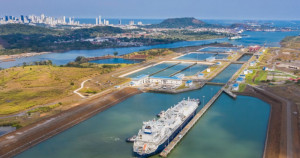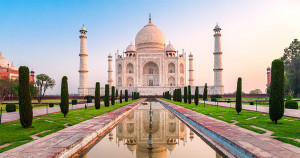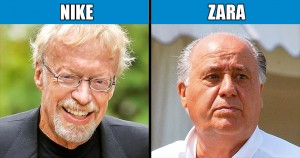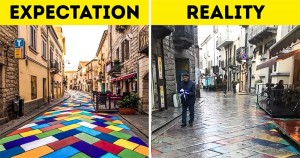9 Fascinating Facts About the Suez Canal
Its origins date back to ancient Egypt.
Napoleon Bonaparte considered building it.
The British government was strongly opposed to its construction.
Planning for the Suez Canal officially began in 1854, when a French former diplomat named Ferdinand de Lesseps negotiated an agreement with the Egyptian viceroy to form the Suez Canal Company. Since Lesseps’ proposed canal had the support of the French Emperor Napoleon III, many British statesmen considered its construction a political scheme designed to undermine their dominance of global shipping.
The British ambassador to France argued that supporting the canal would be a “suicidal act,” and when Lesseps tried to sell shares in the canal company, British papers labeled the project “a flagrant robbery gotten up to despoil the simple people.”
Lesseps went on to engage in a public war of words with British Prime Minister Lord Palmerston, and even challenged railway engineer Robert Stephenson to a duel after he condemned the project in Parliament. The British Empire continued to criticize the canal during its construction, but it later bought a 44 percent stake in the waterway after the cash-strapped Egyptian government auctioned off its shares in 1875.
It was built using a combination of forced peasant labor and state-of-the-art machinery.
Building the Suez Canal required massive labor, and the Egyptian government initially supplied most by forcing the poor to work for nominal pay and under threat of violence. Beginning in late-1861, tens of thousands of peasants used picks and shovels to dig the early portions of the canal by hand. Progress was painfully slow, and the project hit a snag after Egyptian ruler Ismail Pasha abruptly banned the use of forced labor in 1863.
Faced with a critical shortage of workers, Lesseps and the Suez Canal Company changed their strategy and began using several hundred custom-made steam- and coal-powered shovels and dredgers to dig the canal. The new technology gave the project the boost it needed, and the company went on to make rapid progress during the last two years of construction. Of the 75 million cubic meters of sand eventually moved during the construction of the main canal, some three-fourths of it was handled by heavy machinery.
The Statue of Liberty was originally intended for the canal.
Its creator later tried—and failed—to build the Panama Canal.
Having silenced his critics by completing the Suez Canal, Ferdinand de Lesseps later turned his attention toward cutting a canal across the Isthmus of Panama in Central America. Work began in 1881, but despite Lesseps’ prediction that the new canal would be “easier to make, easier to complete, and easier to keep up” than the Suez, the project eventually descended into chaos. Thousands died during construction in the sweltering, disease-ridden jungle, and the team burned through nearly $260 million without ever completing the project.
The company finally went belly up in 1889, triggering a massive scandal that saw Lesseps and several others—including Eiffel Tower designer Gustave Eiffel, who had been hired to design canal locks—convicted of fraud and conspiracy. It would take another 25 years before the Panama Canal was finally completed in a decade-long, American-led construction project.
The canal played a crucial role in a Cold War-era crisis.
In 1956, the Suez Canal was at the center of a brief war between Egypt and the combined forces of Britain, France and Israel. The conflict had its origins in Britain’s military occupation of the canal zone, which had continued even after Egypt gained independence in 1922. Many Egyptians resented the lingering colonial influence, and tensions finally boiled over in July 1956, when Egyptian President Gamal Abdel Nasser nationalized the Suez Canal, supposedly to help fund a dam across the Nile River.
In what became known as the Suez Crisis, a combined British, Israeli and French force launched an attack on Egypt in October 1956. The Europeans succeeded in advancing close to the canal, but later withdrew from Egypt in disgrace following condemnation from the United States and the threat of nuclear retaliation from the Soviet Union. British Prime Minister Anthony Eden resigned in the wake of the scandal, and the Suez Canal was left under Egyptian control.
A fleet of ships was once stranded in the canal for more than eight years.
During June 1967’s Six Day War between Egypt and Israel, the Suez Canal was shut down by the Egyptian government and blocked on either side by mines and scuttled ships. At the time of the closure, 15 international shipping vessels were moored at the canal’s midpoint at the Great Bitter Lake. They would remain stranded in the waterway for eight years, eventually earning the nickname the “Yellow Fleet” for the desert sands that caked their decks.
Most of the crewmembers were rotated on and off the stranded vessels on 3-month assignments, but the rest passed the time by forming their own floating community and hosting sporting and social events. As the years passed, the fleet even developed its own stamps and internal system of trade. The 15 marooned ships were finally allowed to leave the canal in 1975. By then, only two of the vessels were still seaworthy enough to make the voyage under their own power.
In 2015, the canal got a huge overhaul.
For years the canal was hampered by its narrow width and shallow depth, which were insufficient to accommodate two-way traffic from modern tanker ships. In August 2014, Egypt’s Suez Canal Authority announced an ambitious plan to deepen the canal and create a new 22-mile lane branching off the main channel. The expansion opened in 2015, providing ships with a 22-mile channel parallel to the newly deepened main waterway.
The improvements, however, were not enough to prevent a 1,300-foot container ship from becoming wedged—and stuck—in the canal as it traveled from China in March 2021. The ship blocked more than 100 ships at each end of the vital shipping artery for nearly a week, causing major disruptions to global commerce.



















What do you think? Did you find it interesting? Share with your friends!